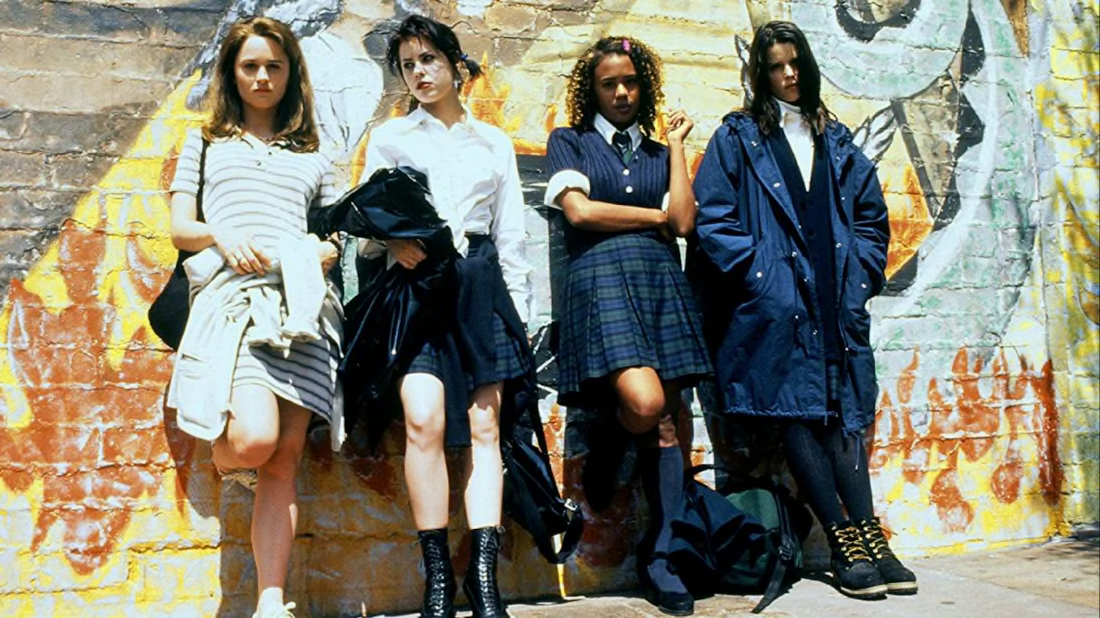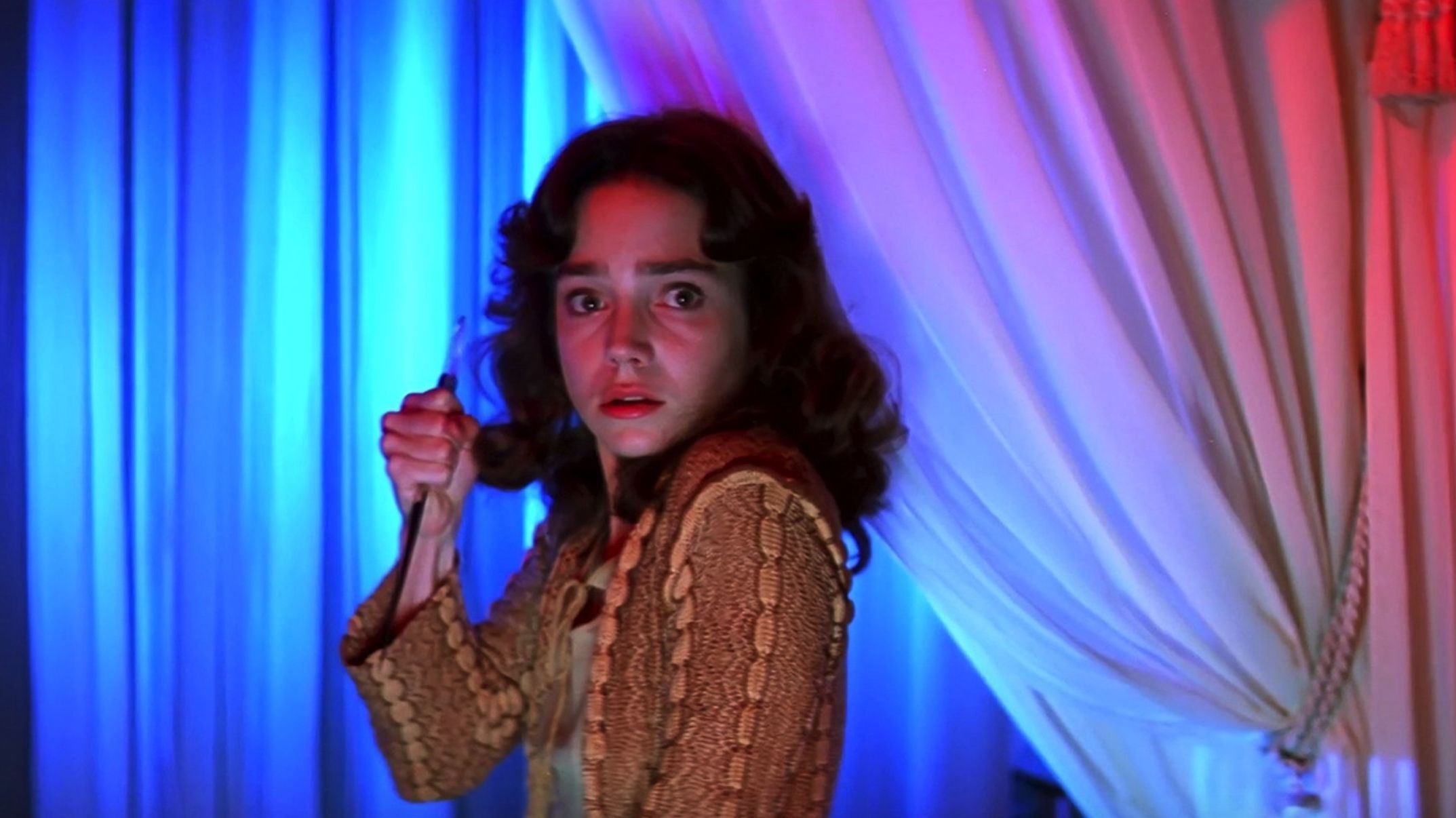Don’t Look Now (1973) dir. Nicolas Roeg

In Nicolas Roeg’s Don’t Look Now, grief is life’s most haunting monster. This 1973 classic thriller sees two grieving parents (played masterfully by Donald Sutherland and Julie Christie) relocate to Venice after the accidental death of their young daughter, and explores how the psychology of grief manifests itself in those that deal with it.
Don’t Look Now plays heavily with aspects of time—via distinctive editing and repetition of symbolic visuals—to create a film that transcends life’s binaries of life and death, past and present, imagination and reality. Possibly one of my favourite cinematic uses of colour, Roeg playfully toys with red, imbuing it with an unsettling ghostliness that floats throughout the film and shocks in its final, climactic moments. It’s a film rife with Freudian-levels of uncanniness and a complete cinematic assault on the senses. From its rich portrayal of grief to its then-incredibly controversial sex scene, Don’t Look Now is a film I’ve never quite been able to shake off: a true testament to the haunting power of human emotion.
Words by Lilia Pavin-Franks
The Craft (1996) dir. Andrew Fleming

If you think Halloween, you probably wouldn’t think Mean Girls (despite its fancy dress party scene), but you should definitely think of its wicked predecessor: The Craft.
This 1996 cult classic is worth a watch and then a hundred more. It is the magical, dark and witty version of the ‘outcasts take revenge on the mean kids’ cliché. It may not be the scariest horror of all time, but it is an enduring classic where witchcraft is synonymous for female power and autonomy and the coven is fuelled by sisterhood.
The Craft is pretty heavy for a Halloween film at times, tackling the many sufferings that can plague adolescence from poverty to bullying to emotional struggles. But the discovery of witchcraft leads to shared strength between the girls. Admittedly their connection is delicate and takes a turn into horror and vengeance, but the film keeps its fierce grip on the subject of female power. This spooky 90s time capsule is your all-out guide to sampling the dark arts whilst wearing a school uniform and grappling with power struggles within your friendship group. It is a funny and damning allegory for the persecution of strong women. And most importantly—it’s a great Halloween film.
Words by Laura Mehers
The Addams Family (1991) dir. Barry Sonnenfeld

If, like me, you would rather not spend your time hiding behind a pillow in fear but still want to enjoy spooky season, then Barry Sonnenfeild’s 1991 classic The Addams Family should be top of your Halloween list. Arguably not a horror film and more a dark comedy, the film is based on the 1938 cartoons from The New Yorker and 1964 TV series. It focuses on the lives of Gomez and Morticia Addams and their children Wednesday and Pugsley, who become the victims of a loan shark’s ploy to scam them out of their vast fortune.
While the subject matter doesn’t seem too ‘Halloween-y’, the spook factor comes from the bizarre and macabre Addams Family who take pleasure in setting booby traps for unsuspecting trespassers and brewing toxic lemonade in a bid to raise money. The wit and sarcasm of Wednesday has you in stitches, while the relationship between Morticia and Gomez will have you believing true love is real, all the while the backdrop of Addams manor will thoroughly give you the creeps.
It may not make you run for cover in pee-your-pants terror, but The Addams Family has everything you need at Halloween – fun, charm and an abundance of good old-fashioned spookiness.
Words by Kate Goodyer
The Elephant Man (1980) dir. David Lynch

The Victorian costume drama The Elephant Man might seem an unconventional choice for Halloween viewing, but the film presents a surprisingly atmospheric look at Victorian London. The film relays the true story of John Merrick (John Hurt), a heavily deformed man who features in a freak show as ‘The Elephant Man’. Upon being discovered by the ambitious surgeon Frederick Treves (Anthony Hopkins), Merrick is rescued from his life of physical abuse.
Treves doesn’t remove Merrick from the public eye however, instead showcasing The Elephant Man to his medical colleagues. Word spreads and before long members of the London elite are visiting Merrick for afternoon tea. By large their motives are not respectful, and whilst the world seems fascinated with Merrick’s physical appearance, the film focusses on Merrick’s intellect and emotional depth.
Director David Lynch, famously dubbed by Pauline Kael as ‘the first popular Surrealist’, imbues the foggy streets of London with a dreamlike atmosphere. In particular, the night-time episodes featuring the cruel Night Porter (Michael Elphick), a demonic presence who invites patrons of the local pub to ridicule Merrick, truly feel like waking nightmares. Much is made in the film of the difficulty in looking at Merrick – he himself finds this traumatising as Treves bans mirrors on his ward. But superbly, Lynch’s film renders the public’s reactions to Merrick as the true source of vulgarity.
Words by Jake Ola Jide Abatan
Suspiria (1977) dir. Dario Argento

While there are a plethora of incredible horror films from the 70s, Dario Argento’s Italian horror classic Suspiria is one of my favourites.
The story centres around Suzy Bannion, an American ballet student who arrives in Germany to join a prestigious dance academy, run by the mysterious Madame Blanc. Things appear strange from the beginning, with students disappearing and rumours of witchcraft and the occult— and it isn’t long before Suzy eventually learns the terrifying truth behind the establishment she has joined.
Aside from the intriguing plot, one of my favourite aspects of the film is its stunning set designs and startling use of colour. Suspiria is easily a contender for the most visually-striking horror film ever made. It demonstrates one of cinema’s final uses of the Technicolour process, meaning that each frame is saturated with intense colours. The disturbing imagery, brilliant soundtrack and gore-heavy sequences make it a genuinely creepy film and an all-round horror masterpiece.
Words by Lucy Ingram
Support The Indiependent
We’re trying to raise £200 a month to help cover our operational costs. This includes our ‘Writer of the Month’ awards, where we recognise the amazing work produced by our contributor team. If you’ve enjoyed reading our site, we’d really appreciate it if you could donate to The Indiependent. Whether you can give £1 or £10, you’d be making a huge difference to our small team.